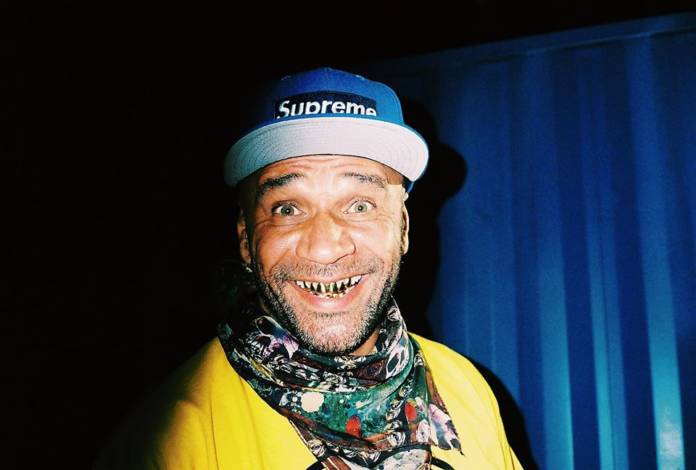If the early 1990s are regarded as the golden age of European techno, a theory recently put forth by British electronic music royalty Kirk Degiorgio, for San Francisco in the late 90ʻs, the soundtrack reverberating-from underground parties, converted warehouses, Full Moon gatherings, grimy punk-rock clubs and “daytime pizza joints that morphed into night-time rave caves” was drum and bass.
UK artist Goldie (performing alongside STAMINA! residents Jamal and SF legend Method-One at1015 Folsom Thu/12) became the day one avatar for this movement in the US circa 1995. That trademark gold grill, definitive grimace, charming presence….. With other pioneers of that era-LTJ Bukem, Grooverider, Roni Size, Jumping Jack Frost, you had to preface the introduction with “this new music called Drum and Bass.” Goldie somehow fused all of his interests—breakdancing, graffiti art aka bombing, breakbeat techno, hip-hop, trip-hop, jungle, and soul-into accessible alchemy.
Inner City Life, a 1995 global anthem, featured the soaring, existential vocals from British songster Diane Charlemagne, enmeshed with granular rhythmic accents and gully bass lines that emoted freedom. This universal concept dragged electronic music into the normcore zeitgeist. So you could just play it. And ffolkes got it.
Back in the day Phunkateck, True Intent, Sister SF, and PBS were some of the DJ crews at the forefront SFʻs drum and bass movement, evangelizing the sub-genre. Darkstep, techstep, atmospheric, liquid funk, ambient, and drumfunk all took up residence, spearheading this music. While not mainstream, it infiltrated. The sound painted the corners of culture in the City. Informing the direction of fashion, gear and art spaces. Entertaining Tech 1.0 happy hour networking events and making a space in the Bullet Proof Boat Party game, it created a dialogue among house, hip-hop, R&B, techno, electro even post-punk DJs.
Somehow those influencers heard their respective musical voice beneath the largest grumble of the bass bins.
The Top, a tiny bar on Haight Street, now called Underground SF, with its small dance floor in back, and the party Eklektic, were the micro-communities, selected temples for worship, that eventually pushed the music to larger venues such as Justice League (now the Independent), 1015 Folsom, and 550 Barneveld, now called Space 550.
These embryonic tent poles, where local talent played beside international artists, fostered connectivity. For a stretch, the city hosted at least six drum and bass parties a week, so these local DJ crews would fly talent out, on Ramen budgets, from the UK knowing there would be plenty of opportunities for artists such as Paradox, Jumping Jack Frost, LTJ Bukem and such to pick up more gigs. Seeing Roni Size pull massive rewinds at The Top, after-hours possibly, beat any larger venue performance.
SF took that UK breakbeat creation, splintered up the sensibility and smoked it out with hydroponic open-minded idealism. As with all golden eras, gentrification, the corporate cash grab disguised as change, is what comes next. DJ’s turned to tech-house, garage, broken-beat, dub-step, and grime… Soon a bass music movement took off in LA at The Low-End Theory party, and brought us many of today’s biggest US dance music artists.
Goldie’s full-length début, 1995’s Timeless, remains his career statement, as well as one of the few jungle releases to reach a broad audience outside of the underground. SF’s d’n’b underground legends will surely turn out when he takes to the decks.
GOLDIE
Thu/12, $17.50-$25
1015 Folsom, SF.
More info here.





